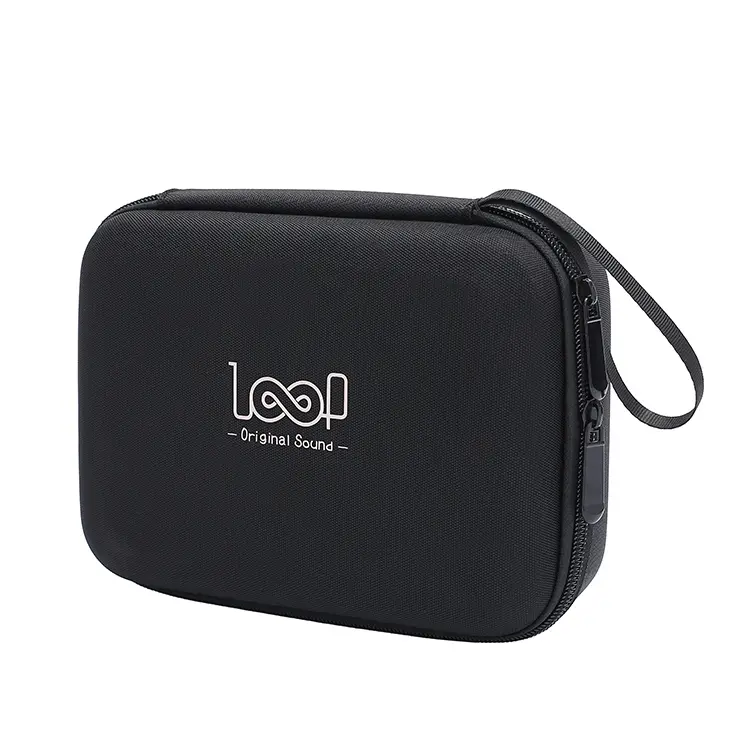Cutting and processing of EVA tool bags
Introduction
In today’s globalized business environment, EVA tool bags have attracted widespread attention from international wholesale buyers due to their lightweight, durable and waterproof properties. The processing technology of EVA (ethylene vinyl acetate) materials, especially cutting and processing, is a key link in the production of high-quality EVA tool bags. This article will explore the technical details, optimization methods and factors that international buyers need to consider when selecting suppliers for EVA tool bag cutting and processing to help you better understand this field.
1. Basic characteristics of EVA materials
EVA is a thermoplastic polymer with good flexibility, impact resistance and waterproofness. These characteristics make it an ideal material for making tool bags, especially in scenarios that require lightweight, durable and waterproof functions. EVA materials can be formed by a variety of processing methods, including thermoforming, stamping and cutting.
2. Key steps in cutting and processing of EVA tool bags
(I) Cutting and processing design
Cutting and processing design is the first and most critical step in the production of EVA tool bags. Designers need to accurately draw cutting drawings based on the size, shape and functional requirements of the tool bag. This step needs to consider the utilization rate of materials, the way the pieces are spliced, and the appearance and functionality of the final product.
(II) Cutting process
Cutting is the process of cutting EVA materials into the required shape according to the design drawings. Common cutting equipment includes laser cutting machines, die cutting machines, and CNC cutting machines. Laser cutting machines are suitable for cutting with complex shapes and high precision requirements, die cutting machines are suitable for mass production, and CNC cutting machines strike a balance between precision and flexibility.
(III) Cutting piece optimization
The goal of cutting piece optimization is to maximize material utilization and reduce waste. This can be achieved by arranging the pieces reasonably, optimizing the cutting path, and using advanced nesting software. For example, through computer-aided design (CAD) software, different cutting schemes can be simulated and the best scheme can be selected to reduce material waste.
3. Technical challenges and solutions for cutting piece processing
(I) Material deformation
EVA materials may deform during the cutting process, especially under high temperature or high pressure. To solve this problem, a pretreatment process can be used, such as heat treating the material before cutting to achieve an appropriate softening degree. In addition, choosing the right cutting equipment and process parameters can also effectively reduce deformation.
(II) Cutting accuracy
Cutting accuracy directly affects the final quality of the tool kit. Laser cutting machines and CNC cutting machines can provide high-precision cutting, but the equipment cost is relatively high. For manufacturers with limited budgets, the cutting accuracy can be improved by optimizing the die design and operation process.
(III) Environmental protection and sustainability
With the increasing awareness of environmental protection, the production of EVA tool kits also needs to consider sustainability. In the process of cutting, environmental protection goals can be achieved by recycling scraps, optimizing material utilization and reducing energy consumption. For example, some manufacturers recycle scraps generated during the cutting process and reuse them to make other products or put them back into production as raw materials.
4. Considerations of international buyers
(I) Quality standards
When choosing EVA tool kit suppliers, international wholesale buyers first focus on product quality. This includes the precision of cutting, the quality of materials and the durability of products. Suppliers need to ensure that their products meet international quality standards such as ISO 9001.
(ii) Production capacity
Buyers need to evaluate the supplier’s production capacity, including the speed of cutting and processing and mass production capacity. Efficient cutting equipment and optimized production processes can significantly improve production efficiency and meet the large demand of the international market.
(iii) Cost-effectiveness
Cost is another important aspect that buyers are concerned about. Suppliers need to reduce costs by optimizing the cutting process, reducing material waste and improving production efficiency while ensuring quality. This can not only improve the competitiveness of products, but also bring greater profit margins to buyers.
(iv) Delivery time
Timely delivery is crucial for international buyers. Suppliers need to have flexible production plans and efficient logistics systems to ensure that products can be delivered on time. This not only helps maintain good customer relationships, but also improves the supplier’s market reputation.
Post time: Jul-14-2025





